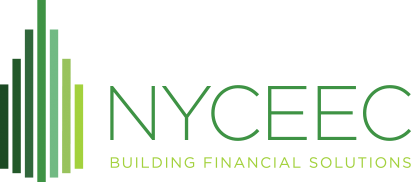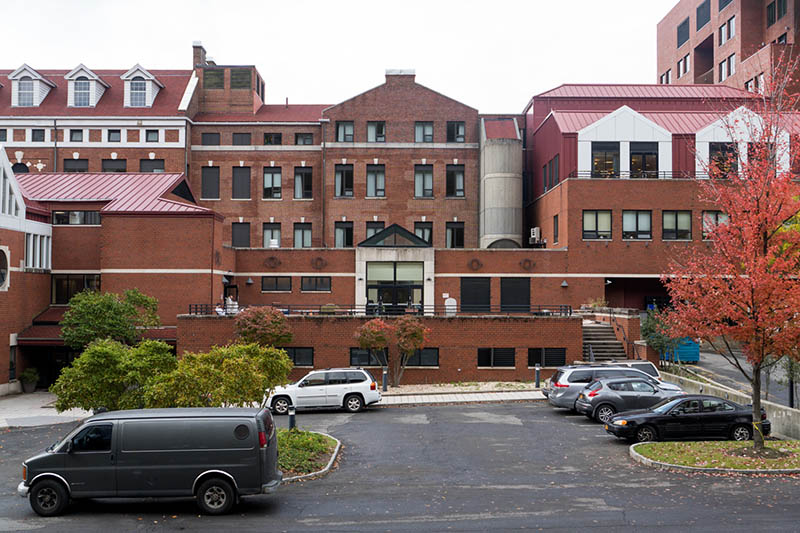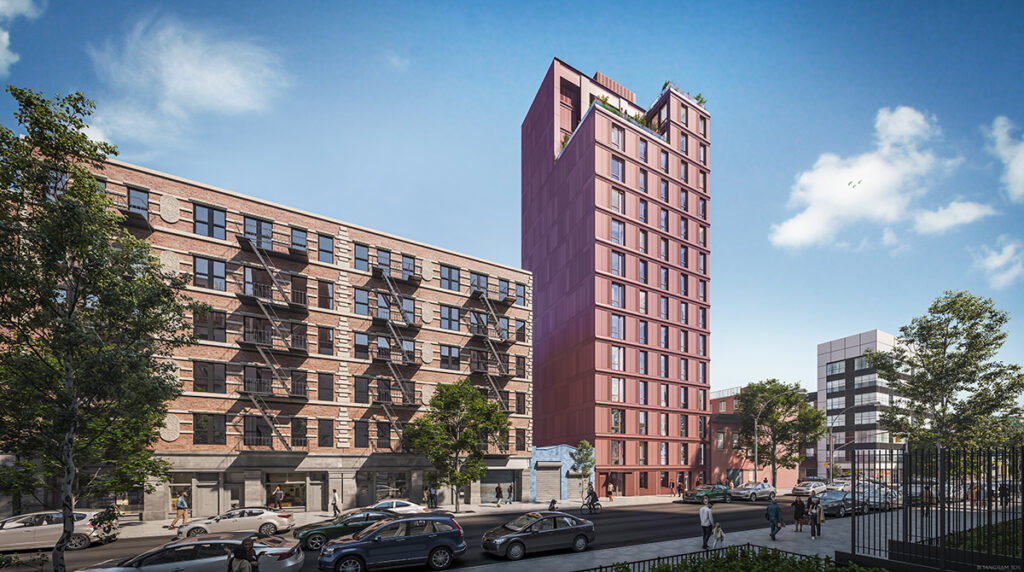Executive Summary
Ecosave, a leading energy services company, has been committed to cost-effective building decarbonization since its founding in 2002. As it grew and needed debt to support its expanding list of projects, it turned to NYCEEC (New York City Energy Efficiency Corporation), a nonprofit local green bank. From 2016 through 2019, NYCEEC made loans totaling over $12.6 million for Ecosave projects at commercial and institutional buildings in Maryland, New York, and Pennsylvania. When Ecosave’s project debt needs began to exceed NYCEEC’s lending capacity, NYCEEC and Ecosave turned to NY Green Bank, a larger state-sponsored green bank, and a division of the New York State Energy Research and Development Authority (NYSERDA). First, NY Green Bank funded a $2 million loan participation in a NYCEEC loan to Ecosave, supporting an energy efficiency project. Then, NY Green Bank provided additional credit to Ecosave, allowing Ecosave to repay NYCEEC and continue growing. Specifically, NY Green Bank provided a $15 million loan to Ecosave in 2019, subsequently upsized to $30 million in 2020. With this capital, Ecosave continued to grow its clean energy project pipeline. In 2023, with continued growth financed by NY Green Bank capital, Ecosave was able to attract private sector capital when KeyBanc Capital Markets successfully closed $53 million of Senior Secured Credit Facilities for Ecosave.
This case study illustrates the catalytic role of green banks: NYCEEC provided debt for early Ecosave projects, and NY Green Bank provided further capital, allowing NYCEEC to recycle its capital and helping Ecosave build the critical mass necessary to efficiently access private sector capital markets.
About Ecosave
Founded in 2002, Ecosave helps building owners save money, optimize their buildings’ operational performance, and achieve their net-zero goals. Ecosave’s holistic solutions encompass energy and water efficiency, clean energy generation, smart building automation, utility management, and more. Under its innovative Energy-as-a-Service (EaaS) model, the company has successfully delivered energy savings and clean energy generation projects at more than 3,500 sites across the United States, Australia, and New Zealand.
About NYCEEC
NYCEEC is a nonprofit green bank using funds from the public, private, and philanthropic sectors to finance community clean energy projects. Launched in 2010 by the New York City Mayor’s Office, NYCEEC has since expanded its geographical reach throughout the Northeast and Mid-Atlantic regions. NYCEEC’s mission is to deliver financing solutions and advance markets for energy efficiency and clean energy in communities. To date, NYCEEC has mobilized nearly $500 million to fund energy efficiency and clean energy projects, with nearly 85% of those projects in or serving low-to-moderate income communities.
Collaboration: NYCEEC and Ecosave
In 2016, Ecosave approached NYCEEC seeking a long-term lending partnership to support their growth. This growth was driven by their business model, where Ecosave would enter into an “Ecosave Services Agreement” (“ESA”) with their customers. In return, Ecosave would fund the full capital cost of the energy project and guarantee lowered energy consumption for the building, which translates into lower customer bills. NYCEEC would provide debt financing to help Ecosave fund the project cost. Customer energy savings would then be used to pay an annual fee to Ecosave, including funds to repay the NYCEEC debt.
During this lending partnership, NYCEEC provided financing for six ESAs at a total of 10 commercial and institutional buildings. Across the six projects, NYCEEC provided $12.6 million of debt financing. The NYCEEC financing was critical in enabling Ecosave to pay for the upfront costs of the energy efficiency measures that were covered under their ESAs. The lending partnership between NYCEEC and Ecosave allowed for an efficient process of reviewing each project, providing additional benefits to each organization.
To help manage its credit exposure to Ecosave projects and crowd-in additional capital, NYCEEC sold $1.48 million of loan participations in these projects to a private sector lender. When NYCEEC looked to further diversify its credit risks, it turned to NY Green Bank to help fund future Ecosave projects.
About NY Green Bank
NY Green Bank, a division of the New York State Energy Research and Development Authority (NYSERDA), is a state-sponsored, specialized financial entity working with the private sector to increase investments into New York’s clean energy markets, creating a more efficient, reliable and sustainable energy system. NY Green Bank’s investments and activities support New York State’s nation-leading goals to combat climate change, as outlined in the Climate Leadership and Community Protection Act.
Collaboration: NY Green Bank, NYCEEC, and Ecosave
In 2018, NYCEEC funded an Ecosave project at an assisted living facility in the Bronx. Given that loan and prior loans, NYCEEC’s exposure to Ecosave began to approach NYCEEC’s lending limits. NYCEEC engaged NY Green Bank to take a $2 million participation in the loan. In so doing, NYCEEC managed its credit exposure to Ecosave projects and NY Green Bank became familiar with Ecosave, its business model, and its important role in developing energy projects.
Achieving Scale & Access to Capital Markets
Through its collaboration with two green banks, Ecosave scaled their ESA product and increased their impact. NYCEEC, NY Green Bank, and Ecosave fostered a collaborative relationship, which still stands today.
In 2019, NY Green Bank—with the benefit of a prior lending relationship with Ecosave given its $2 million participation in the prior NYCEEC loan to Ecosave—provided a $15 million loan to Ecosave, which got upsized to $30 million in 2020. This allowed Ecosave to grow its pipeline and portfolio of projects significantly. And in 2023, with continued growth financed by NY Green Bank, Ecosave was able to crowd-in private sector capital when KeyBanc Capital Markets successfully closed $53 million of Senior Secured Credit Facilities for Ecosave.
Cumulative Impact
As part of the energy as a service (EaaS) model, Ecosave provides monitoring and verification services for the projects it completes. This includes actionable analytics and measurement and verification of savings using the International Performance Measurement Verification Protocol (IPMVP). More broadly, Ecosave has grown significantly from the time it first approached NYCEEC to now. Through May 2024, Ecosave projects have delivered cumulative energy savings equivalent to 1.2 million tonnes of greenhouse gas emissions reduction.
In regard to capital mobilization, the $12.6 million of initial lending from NYCEEC—which has been repaid—helped mobilize (a) $1.4 million of private capital through loan participations at the time of project funding, (b) $32 million of public capital through the $2 million loan participation and subsequent $30 million credit facility provided by NY Green Bank, and (c) $53 million of private sector capital through the additional bank facility. Given its operations and lending track record, we expect Ecosave will be able to access private sector capital to meet its future capital needs and to repay its NY Green Bank facility.
With the NYCEEC funds already repaid by Ecosave, and with the NY Green Bank funds expected to be repaid from the proceeds of future loans by private sector capital providers, both green banks are able to recycle their funds and continue to look for the next generation of energy services companies looking to achieve scale.








